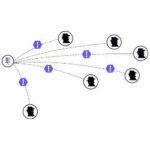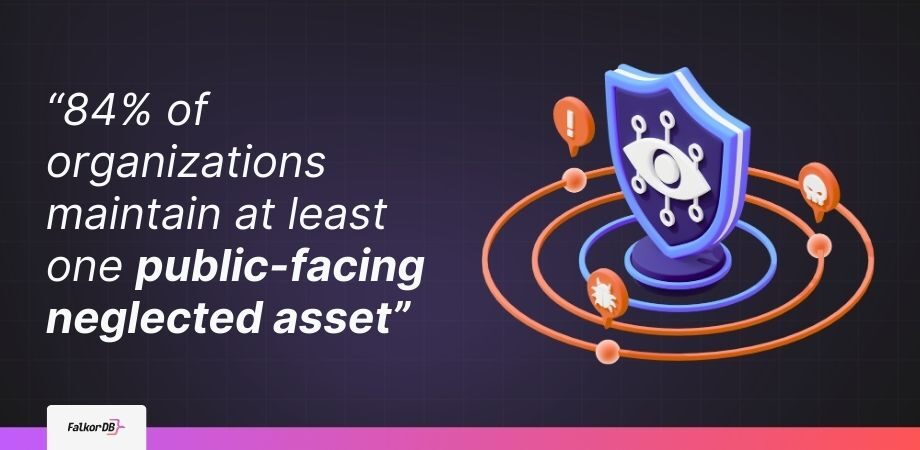Highlights
- Attack Path Discovery: Graph algorithms identify privilege escalation vectors across cloud services in minutes instead of hours through relationship analysis.
- Multi-Tenant Efficiency: Dedicated graph instances per tenant eliminate data commingling while sharing compute resources for 10,000+ customer graphs.
- Real-Time Performance: Sub-100ms P99 response times for identity relationship queries across multi-million-node security graphs during investigations.
Recommended reading: 6 Reasons you need a graph to store your security data
Security vendors face mounting challenges in building scalable, performant security platforms that can process large-scale data streams while maintaining millisecond response times for critical security operations.
“84% of organizations maintain at least one public-facing neglected asset, highlighting the difficulty of maintaining visibility in dynamic cloud environments.”, Orca Security.
Cloud security architecture demands multi-tenancy approaches for teams dealing with several high-impact use cases, including:
Attack Path Discovery
Security teams cannot trace privilege escalation vectors across cloud infrastructure in real-time. Conventional tools analyze isolated data points without mapping entity relationships.
Identity Sprawl Analysis
Multi-cloud environments contain thousands of interconnected identities and permissions. Current solutions provide tabular views but fail to detect over-privileged access patterns across service boundaries.
Threat Pattern Recognition
Coordinated attacks operate through relationship patterns invisible in conventional analysis. Behavioral clustering requires understanding entity connections, not individual events.
Cloud Security Posture Management (CSPM) faces significant blind spots, with 91% of organizations reporting that point tools create visibility gaps affecting threat prevention., Palo Alto Networks
Graphs’ Critical Role
Graph storage maintains resource relationships explicitly, enabling automated attack path analysis across cloud service boundaries, as well as real-time vulnerability impact assessment through connected component traversal.
Identity graphs process permission inheritance chains and service authentication patterns, offering continuous privilege monitoring with automated over-permission detection across multi-cloud environments.
Operational Impact
Attack path analysis: Minutes instead of hours for privilege escalation mapping
Identity relationship queries: Sub-100ms P99 response times across multi-million-node graphs
Multi-tenant deployment: 10,000+ customer graphs per database instance
Cloud security platforms require real-time visibility into asset configuration, vulnerability, and identity relationships for effective risk prioritization.
Conventional approaches store security data in isolated tables, requiring multiple JOIN operations during investigations, damaging performance and the ability to deliver insights in real-time.
FalkorDB’s Graph Algorithms for Cyber
Hidden Attack Path Discovery
Betweenness centrality algorithms identify critical nodes in potential attack chains, revealing privilege escalation vectors that span multiple cloud services and identity boundaries.

Access Relationship Mapping
Weakly connected component analysis reveals isolated systems and misconfigured network segments through disconnected component detection.

Behavioral Pattern Detection
Community detection algorithms group entities by access patterns and resource usage, identifying coordinated threats and insider risk vectors. Fast convergence enables real-time suspicious cluster identification during active investigations.
Multi-Tenant Security Operations
Multi-tenant security platforms face complex data isolation challenges that directly impact performance and security.
Database-level isolation provides maximum security but highest cost and complexity.
Shared database approaches introduce security risks due to holding multiple customers’ data.
Organizations must balance tenant isolation requirements with query performance, as additional tenant filtering creates computational overhead for all database operations.
FalkorDB’s Multi-tenancy Key Benefits
- Zero Data Commingling: Each tenant receives dedicated graph instance within shared infrastructure
- Resource Optimization: Efficient multi-graph management to reduce deployment costs compared to separate database instances
- Future Scaling: Out-of-the-box infrastructure that scales with you as you grow
Conclusion
While SQL or document stores can serve your current use cases, richer security insights can be uncovered with graphs, offering far deeper resolutions than previously possible.
Attackers think in graphs, so stop thinking in tables and JOINS. This is why market leaders in this space, like WIZ, incorporate graphs as a main component in their product architecture.
FAQ
How do graph databases improve cloud security posture management compared to traditional SQL approaches?
Graph databases maintain explicit resource relationships, enabling automated attack path analysis and real-time vulnerability impact assessment.
What makes multi-tenant graph architecture suitable for security platforms with thousands of customers?
Dedicated graph instances per tenant provide zero data commingling while sharing compute resources, supporting 10,000+ customer graphs per database.
How fast can graph algorithms detect attack patterns in large-scale cloud environments?
Community detection and betweenness centrality algorithms deliver sub-100ms response times for threat pattern recognition across multi-million-node graphs.
References and citations
- Orca Security – 2024 State of Cloud Security Report: “81% of organizations have public-facing neglected assets with open ports—prime targets for attackers who routinely perform reconnaissance to detect exposed ports and known vulnerabilities.” Orca Security
- Palo Alto Networks – 2024 State of Cloud-Native Security Report via FedTech: “91% of organizations blame the growing number of point tools for creating blind spots.” Solving the Multicloud Security P
- WIZ Security Platform – Referenced as market leader incorporating graph databases for competitive advantage in cloud security architecture (no direct link provided in source material)
